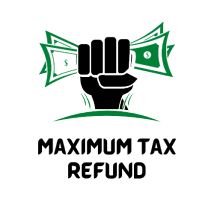In July 2024, Australia will witness the implementation of Stage 3 tax cuts, a significant overhaul in the nation’s tax regime. These changes, part of a broader tax reform agenda set in motion by the Morrison government in 2019, aim to simplify the tax system and provide relief to middle and high-income earners. This comprehensive guide delves into the specifics of the Stage 3 tax cuts, their potential impact on the economy, and what they mean for Australian taxpayers.
Table of Contents
- Introduction to Stage 3 Tax Cuts
- The Evolution of the Tax Cuts
- Detailed Breakdown of the Stage 3 Tax Cuts
- Who Benefits from the Stage 3 Tax Cuts?
- Economic Implications
- Criticisms and Concerns
- Preparing for the Changes
- FAQs about Stage 3 Tax Cuts
- Conclusion
1. Introduction to Stage 3 Tax Cuts
The Stage 3 tax cuts mark the final phase of a three-stage tax reform strategy aimed at transforming Australia’s income tax system. Scheduled to commence on July 1, 2024, these cuts are designed to simplify the tax brackets and reduce the tax burden for millions of Australians.
The primary goal is to enhance disposable income, stimulate economic growth, and provide greater financial flexibility to taxpayers. By flattening the tax structure, the government hopes to create a more equitable and efficient system.
2. The Evolution of the Tax Cuts
The tax reform journey began in 2018 when the then Treasurer, Scott Morrison, introduced a three-stage tax plan. Here’s a quick recap of the stages:
- Stage 1 (2018-2019): Introduced the Low and Middle Income Tax Offset (LMITO) and increased the top threshold of the 32.5% tax bracket from $87,000 to $90,000.
- Stage 2 (2020): Brought forward in 2020 to boost the economy amidst the COVID-19 pandemic, this stage further increased the 19% tax bracket to $45,000 and the 32.5% bracket to $120,000, along with a temporary extension of LMITO.
- Stage 3 (2024): The focus of our discussion, this stage, promises a more significant restructuring, eliminating the 37% tax bracket altogether and adjusting other brackets to streamline the tax system.
3. Detailed Breakdown of the Stage 3 Tax Cuts
The Stage 3 tax cuts involve significant changes to the income tax brackets. Here’s a detailed breakdown:
- Current Tax Brackets (Before Stage 3)
- 0% on income up to $18,200
- 19% on income from $18,201 to $45,000
- 32.5% on income from $45,001 to $120,000
- 37% on income from $120,001 to $180,000
- 45% on income above $180,000
- New Tax Brackets (After Stage 3)
- 0% on income up to $18,200
- 19% on income from $18,201 to $45,000
- 30% on income from $45,001 to $200,000
- 45% on income above $200,000
The most notable change is the abolition of the 37% tax bracket and the reduction of the 32.5% bracket to 30%, which now extends up to $200,000. This flattening of the tax brackets aims to simplify the tax code and reduce the marginal tax rates for higher income earners.
4. Who Benefits from the Stage 3 Tax Cuts?
The new tax structure primarily benefits middle to high-income earners. Here’s a closer look at the impact across different income levels:
- Low-Income Earners (Up to $45,000): Minimal change as their tax rate remains at 19%.
- Middle-Income Earners ($45,001 to $120,000): Beneficial as the tax rate drops from 32.5% to 30%, resulting in increased take-home pay.
- High-Income Earners ($120,001 to $200,000): Significant benefits due to the elimination of the 37% bracket, leading to substantial tax savings.
- Very High-Income Earners (Above $200,000): While still taxed at the highest rate of 45%, the extension of the 30% bracket to $200,000 means considerable savings.
5. Economic Implications
The Stage 3 tax cuts are expected to have several macroeconomic impacts:
- Increased Disposable Income: Higher take-home pay for many Australians could lead to increased consumer spending, providing a boost to the economy.
- Investment and Savings: With more disposable income, individuals may invest or save more, potentially stimulating the financial markets and savings rates.
- Work Incentives: Lower marginal tax rates could encourage more people to work additional hours or seek higher-paying jobs, thus increasing labor market participation.
- Inflation Concerns: Increased spending might drive inflationary pressures, which the Reserve Bank of Australia will need to monitor and manage.
6. Criticisms and Concerns
Despite the potential benefits, the Stage 3 tax cuts have faced criticism and concerns from various quarters:
- Income Inequality: Critics argue that the cuts disproportionately benefit high-income earners, potentially widening the income inequality gap.
- Budget Deficit: With significant tax revenue reductions, concerns about increasing the national budget deficit have been raised.
- Public Services: Reduced tax revenue could lead to cuts in public services or infrastructure investments, impacting the broader community.
7. Preparing for the Changes
As the implementation date approaches, it’s essential for individuals and businesses to prepare for the changes:
- Personal Financial Planning: Review your income and tax planning strategies to optimize benefits from the new tax structure.
- Business Planning: Companies should consider the impact on payroll and overall financial planning to align with the new tax regime.
- Consulting Professionals: Engage with tax professionals or financial advisors to navigate the changes effectively and ensure compliance.
8. FAQs about Stage 3 Tax Cuts
Q1: When do the Stage 3 tax cuts come into effect? A1: The Stage 3 tax cuts are set to come into effect on July 1, 2024.
Q2: Who benefits the most from the Stage 3 tax cuts? A2: Middle to high-income earners stand to benefit the most from the Stage 3 tax cuts.
Q3: How do the Stage 3 tax cuts affect low-income earners? A3: Low-income earners see minimal change as their tax rate remains unchanged.
Q4: Will the tax cuts impact government services? A4: There is a potential risk of reduced funding for public services due to decreased tax revenue.
Q5: How can individuals prepare for the new tax changes? A5: Reviewing personal finances, consulting tax professionals, and adjusting financial planning strategies are key steps to prepare for the new tax changes.
9. Conclusion
The Stage 3 tax cuts represent a significant shift in Australia’s tax landscape, aiming to simplify the system and provide tax relief to a broad segment of the population. While they promise increased disposable income and potential economic benefits, they also bring concerns regarding income inequality and public service funding. As the July 2024 implementation date approaches, it’s crucial for individuals and businesses to understand the changes and prepare accordingly.
By staying informed and planning ahead, Australians can navigate the new tax regime effectively and make the most of the opportunities it presents.


